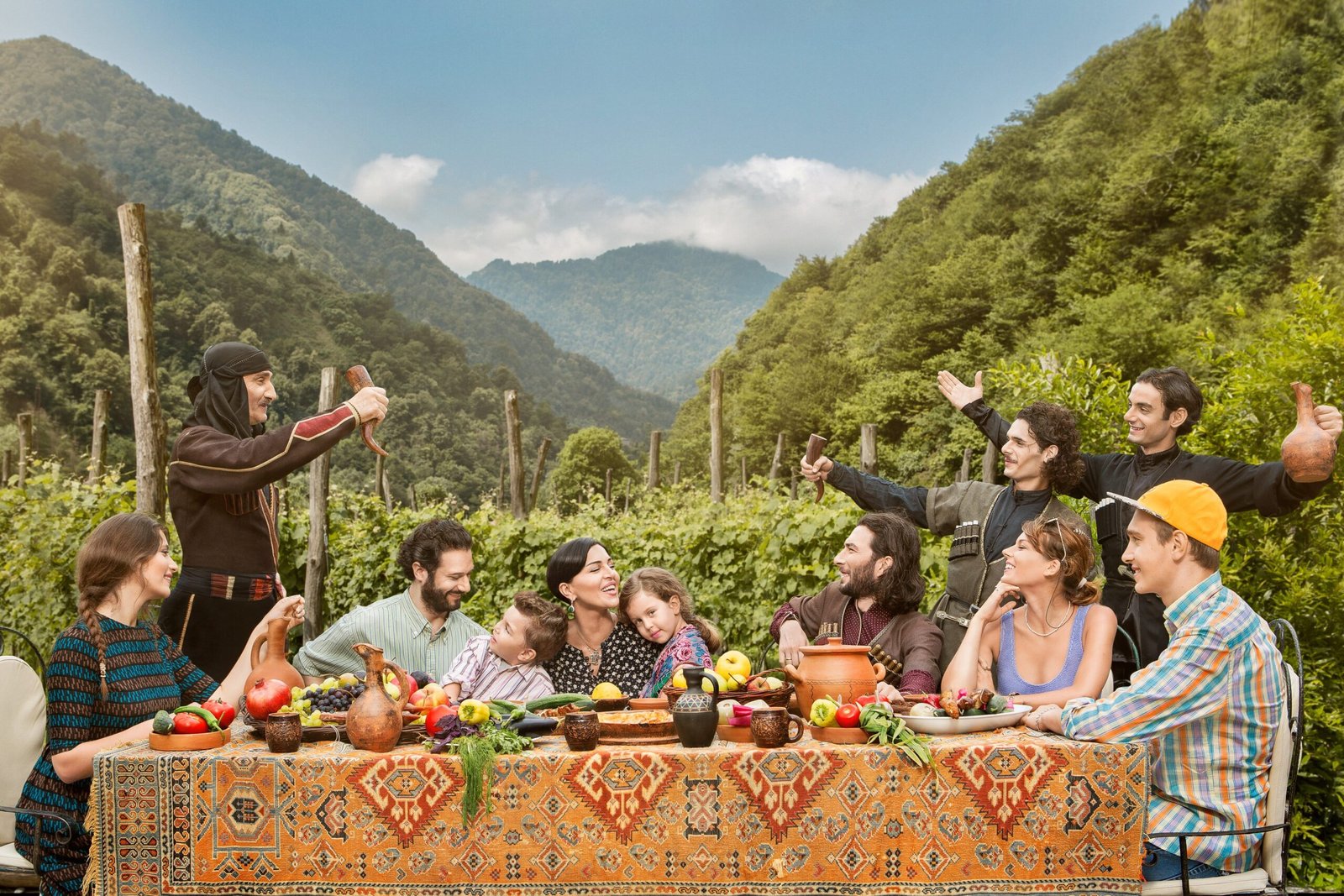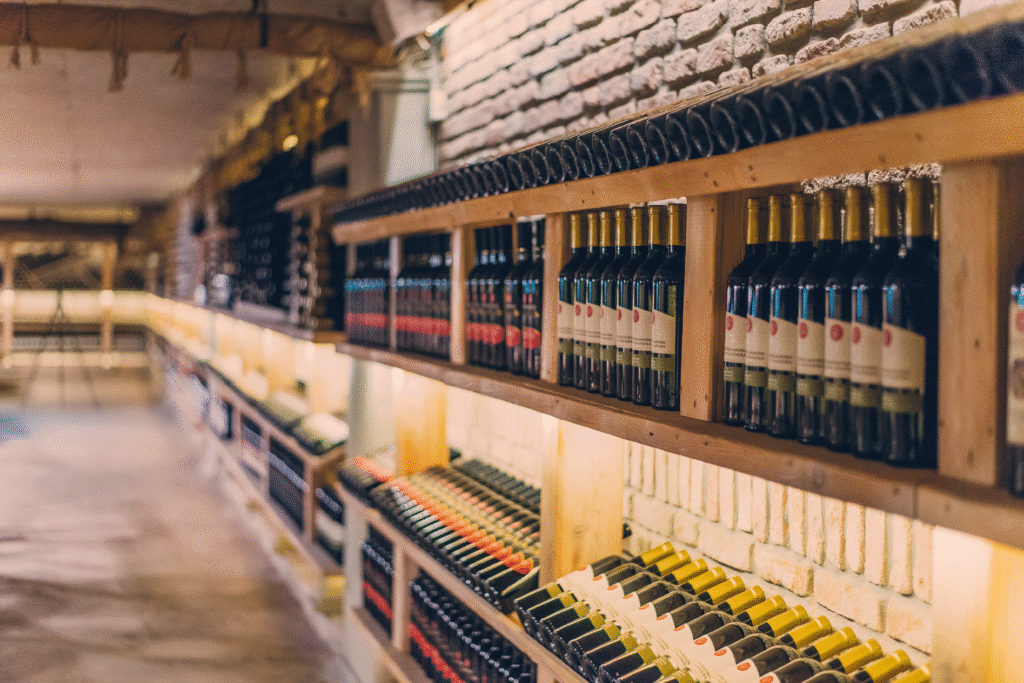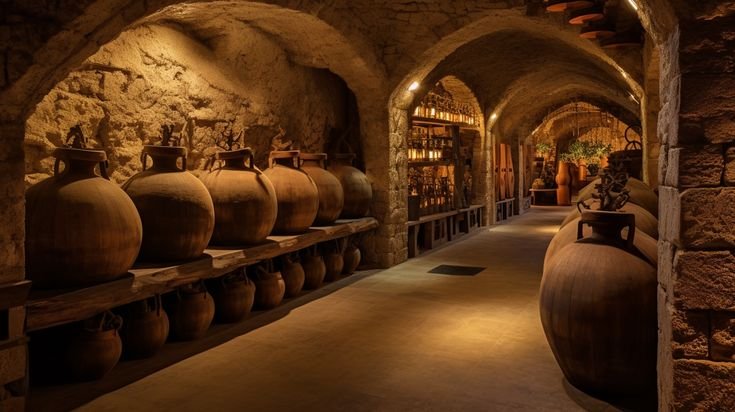
A 8,000-Year-Old Winemaking Tradition
Archaeological evidence shows that Georgians were making wine as early as 6000 BC. Among the most iconic discoveries are qvevri — large clay vessels buried underground for fermenting and aging wine. This ancient technique remains central to Georgian winemaking today.
Georgia is home to over 500 indigenous grape varieties — one of the highest numbers in the world — many of which are used exclusively in Georgian wines. Among the most notable:
- Saperavi – a bold red grape known for deep color and rich tannins
- Rkatsiteli – a versatile white grape with crisp acidity
- Other unique varieties: Kisi, Mtsvane, Aladasturi, and Otskhanuri Sapere

Wine as a Cultural Symbol
In Georgia, wine is deeply embedded in daily life, spirituality, and social customs. The traditional supra — a festive feast led by a tamada (toastmaster) — highlights wine’s role in uniting people through stories, history, and heartfelt toasts.
Wine also holds sacred meaning in Georgian Orthodox Christianity. As one of the world’s oldest Christian nations, Georgia uses wine in religious rituals, further embedding it into the spiritual and national fabric.

Qvevri Winemaking: A Living Legacy
Georgia’s winemaking is perhaps best known for the qvevri method, where crushed grapes ferment underground with skins, seeds, and stems. This natural process yields bold, complex wines, often referred to as “amber wines” when made from white grapes.
- In 2013, UNESCO recognized the qvevri winemaking method as Intangible Cultural Heritage of Humanity
- Traditional wines typically use wild yeast and minimal intervention, emphasizing sustainability and purity
A Modern Revival and Global Recognition

After the collapse of the Soviet Union in the 1990s, Georgia’s wine industry faced hardship. But in recent decades, a new generation of winemakers has sparked a powerful revival. By blending ancient methods with modern techniques, Georgian wines are now earning international acclaim.
Key industry facts:
- 500+ native grape varieties
- Over 25 Protected Designations of Origin (PDOs)
- 150+ active wineries and growing
- ~300 million liters of wine produced annually
Wine tourism is booming, especially in regions like Kakheti, Imereti, and Racha, where visitors can taste wines at family-run cellars, explore ancient vineyards, and experience authentic Georgian hospitality.

Conclusion: A Toast to Georgia’s Past and Future
Georgia’s wine story is one of resilience, innovation, and pride. From the depths of qvevris to the global wine stage, each bottle of Georgian wine tells a tale thousands of years in the making.
So whether you’re sipping Saperavi, enjoying an amber Rkatsiteli, or exploring natural qvevri wines, you’re not just tasting a drink — you’re experiencing a living heritage.
Raise your glass to Georgia — the true cradle of wine.







